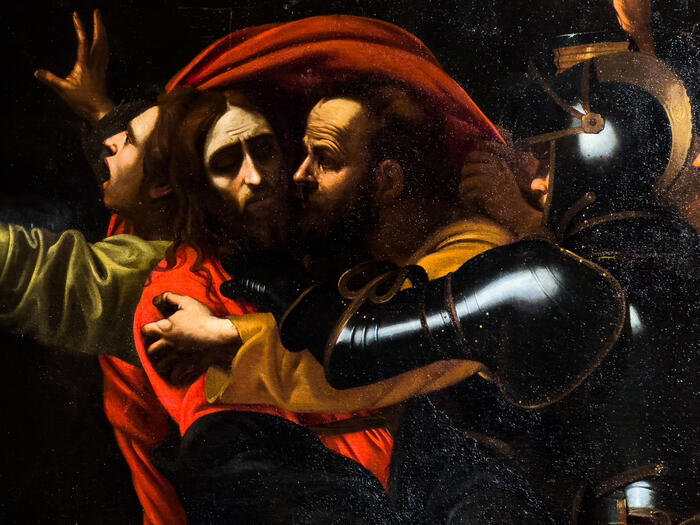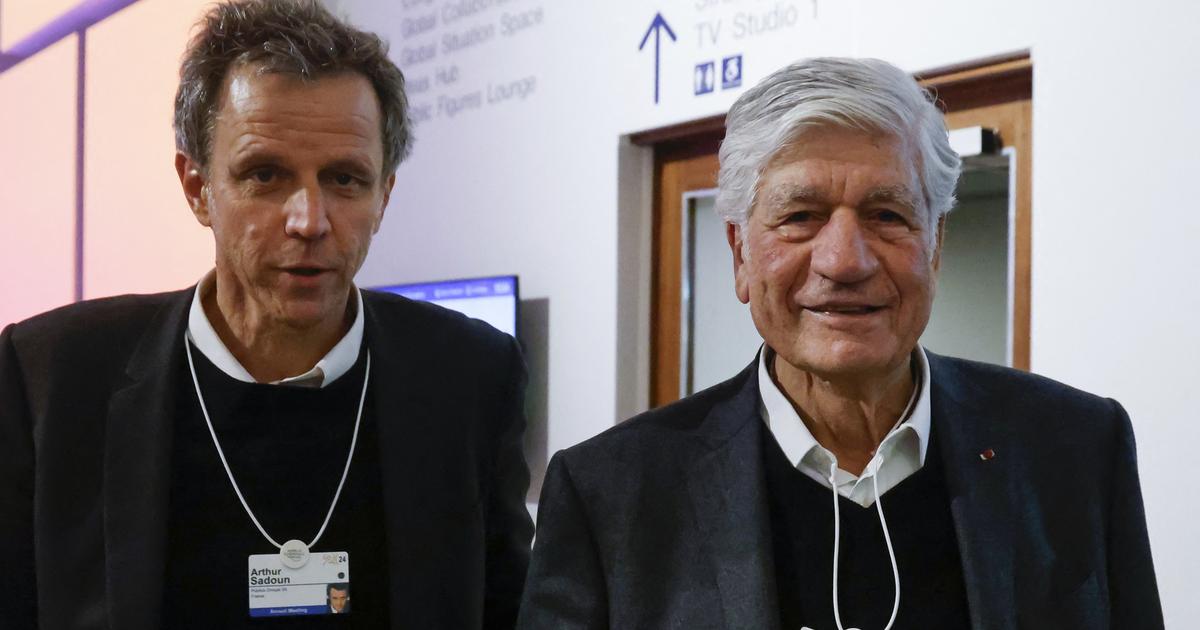He likes everything about Goya, his passion, and when he talks about
The Executions
,
one of his favorite paintings, Manuela Mena, 72-year-old from Madrid, doctor in Art History and former Deputy Director of Conservation and Research at the Prado Museum, cannot help it. the questions referring to this time.
On the supposed
caravaggio
that was going to be auctioned, is blunt: it should not be restored, or even touched, even though it is dirty.
"It would be an attack on a work of art," he says.
In the interview, done by Skype (she lives a long time in England), she points with her finger as if she wanted to explain the dangers of the current cockfight that Spanish politics has become.
That finger is the metaphor of a gunshot.
These wrapped bullets had not yet emerged in the Madrid campaign, so what the historian says about the Civil War, the most serious episode in Spain in the 20th century, underscores her amazement over the climate that has been created.
More information
Naples, the Academy of San Fernando and the salon of a 19th century politician: the romantic journey of the so-called 'caravaggio'
Jorge Coll: "It will be decided whether or not to sell it after the investigation and restoration of the painting"
The Academy of San Fernando gave Pérez de Castro the 'caravaggio' because they did not know its origin
Question.
What do we do with the supposed
caravaggio
?
Answer.
I have not seen it in nature, but it seems to me that it is Caravaggio. I saw a bad photo that they sent me from EL PAÍS and it already seemed authentic to me. Then I saw it more and I still maintain that belief. You should go to the Prado Museum. Then the story arose that it had been a work exchanged by the Academia de San Fernando with one of its members in 1823. That gives it a pedigree, although it is also possible that it was a copy. But, although I still have to see it, it seems to me an original by that painter. And what do we do? This painting is a private property, but I believe that it is already within the system of Asset of Cultural Interest (BIC) of works of historical importance. It has a protection and cannot be touched by just anyone. What's more: don't touch it, it can't be restored.It is not necessary to restore a work until it is inside the museum and it is concluded that it should be cleaned because it would be better that way. If not, touching it would be an attack on a work of art, as I have seen so many. You have to be very careful. It cannot be placed in the hands of just anyone, nor can it be placed in the hands of just anyone, because it seems dirty to them. You don't need to clean it until you enter a large museum.
Q.
EL PAÍS published that the Academy delivered that painting because it did not know its origin.
R.
The San Fernando Academy of the 18th century is not the same as current art research. At that time the origin was of no interest, that was not going to move them to do one thing or another. Caravaggio was an artist not appreciated by the movement of the 18th century, classicism, neoclassicism, the taste for antiquity in painting, and he was still a curse for having used nature, reality and gloom, something that generated a debate tremendous on whether that could be done or not. A discussion between the classicist supporters of Carracci and the naturalists of Caravaggio, which filled the seventeenth century. Caravaggio was not given that height. Therefore, that the academy had it in the 18th century ... well, I don't know why it would enter.And the academy delivers it because it is a work by an artist who in that century is not as interesting as Alonso Cano could be, classic, calm, what was worn at that time. So he gave himself up in exchange for a
alonso cano.
Pérez de Castro would do it with that idea and not because, as they say now, they did not know the origin of the
caravaggio
.
P.
Continuing with the present, today is May 3.
You say that
the shootings
should be taught to children and that it would not matter if they had nightmares.
A.
That's right.
I say it now again.
It is very interesting to me that May
3
gave me nightmares, but I don't know if it would happen to the others.
Q.
You could also say what you said years ago about the need to create a Ministry of Understanding between Autonomies.
A.
I don't know if I said it, but it seems like a good idea.
It was as a result of that plane crash that left Barcelona and crashed in the Alps.
He was with fifty children who had been making Catalan friends.
And that, that children become friends from other places, we do not have it even among our autonomies.
Every year my parents took my brother and me to see a different place in Spain, and they always gave us a positive view of the people and their places.
At 15 he knew Spain well!
'Shootings' should be taught to all children
Q.
Now we live like a club fight that recalls moments before the Civil War.
You alternate countries.
Do you see something similar out there?
R.
Political tension exists everywhere. I attended an impressive anti-Brexit rally here [in the UK] two years ago. It was absolutely peaceful. In Parliament they are less peaceful: there are insults, shouts, boos. Since I was a girl I was interested in politics, since when the press only said what happened abroad. And now I see parliamentary sessions in Spain and in other countries. The parliamentary violence of the English is a mask, because deep down they are not violent, they are courteous. This one in Spain is a pre-civil war violence. If we were not in the EU, things would be much more dangerous. My parents and my grandmother told me how the Civil War was prepared. He had a real obsession with that episode. He was in the Casa de Campo, on the Valencia front, he was a culture militiaman of the Communist Brigade,dedicated to teaching reading and writing. After the war there were people who knelt down to kiss his feet because he had taught them to read.
Q.
And how did you tell him that this violence had come?
R.
People wore espadrilles, shoes were rare.
It is already known what determined the beginning of the war.
It was the murder of a person [José Calvo Sotelo, leader of Renovación Española].
That is the most dangerous thing, that the shot is fired.
Let's hope it doesn't come to that.
Q.
The art you have seen is full of symbols.
Those two paintings by Goya,
Duel with clubs
and
Half-sunk dog,
apart from
The Executions,
come to mind as soon as they talk about that violence and the current moods.
R.
Goya is so varied that you can think of the
Club Duel,
for example
.
However
,
in my first steps in art, the artist who helped me the most is Nicolas Poussin, a seventeenth-century Frenchman, a kind of boiling cauldron that calms his deep dissatisfaction with painting.
Q.
And that dog
de Goya is sunk or rising?
R. He
is receiving his master, because Goya was very fond of dogs.
He had that modern sensibility that Frederick the Great or Catherine of Russia also enjoyed, who buried himself with their dogs.
Goya speaks in his letters of the animals.
I am sorry that I do not have a deep symbolic vision towards that work like the one we have today, although it seems very good to me.
For me, that dog is looking at the entrance of the master, he is saying "he is coming."
This one in Spain is a pre-civil war violence
Q. I was
saying that Spain saves your quarrels in large part because it is in the EU.
And the Brexit that it means in that country that has left the Union?
A.
They are desperate because they don't have fish.
Others are because there will be no protection for animals or plants as there was with the EU and because now horrible meat will come from the US They are realizing the mistake they made.
Among them, giving up Erasmus ... As for Europe, I think there should be a political union and not this thing by halves.
And that union should have a true single command.
P.
You were marked by the reading that your parents instilled in you, also of books then prohibited.
And the other fact was that your parents made you watch
The Executions
when at three years old you had your gaze at the level of the eyes of the murdered.
R. They
took me to a nuns' school because they wanted me to study French, and there was no way to do it in a secular school.
My father thought that he had suffered for not believing in God, and that if we learned among nuns, that psychological suffering we were not going to have.
He was an optimist.
I read
El cura de Monleón,
by Pío Baroja, and said goodbye to the Church.
As for the forbidden books, my father read us something every night.
When he came to a delicate scene, he would say "ahem, ahem" and skip it.
And immediately my brother and I were going to read that, which at one time was Voltaire.
Voltaire should be read by all the children in the world.
Q.
And the eyes of those shot
on May 3
?
R.
Ah ... My parents took me to the Prado very early. The painting I liked the most was
The Nymphs Chased by Satyrs,
by Rubens. Among Goya's paintings, May
3
appeared in the foreground. There is that dead man with his arms out, his head shattered by the shots ... A friend who was in the Yugoslavian war told me that the effect of the painter's shots is perfectly described. The height of my eyes was there. My parents told me: "Look at the white shirt", but all I could see was the dead man's head. It gave me nightmares for years, I contemplated on the street corners scenes similar to those I had seen in that painting, probably conceived with the intention of showing the hideous violence of war.

/cloudfront-eu-central-1.images.arcpublishing.com/prisa/Q5G3QJJOIREPNJI3DP6PYCMFDI.jpg)



/cloudfront-eu-central-1.images.arcpublishing.com/prisa/KWUQSQKTDXNFKSUDZHDLLYB3JA.jpg)








